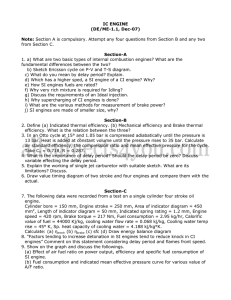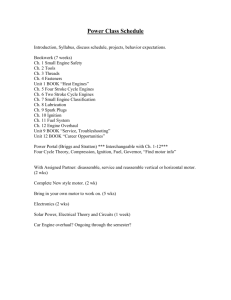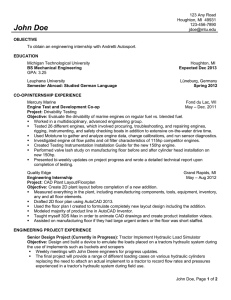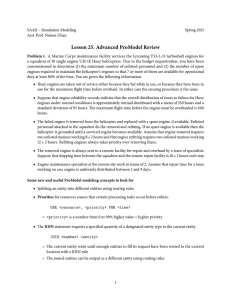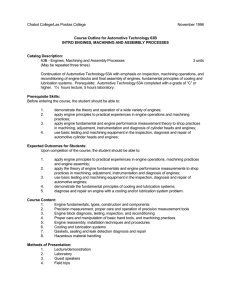EM461 Engines: Principles, Design, and Applications United States Naval Academy
advertisement
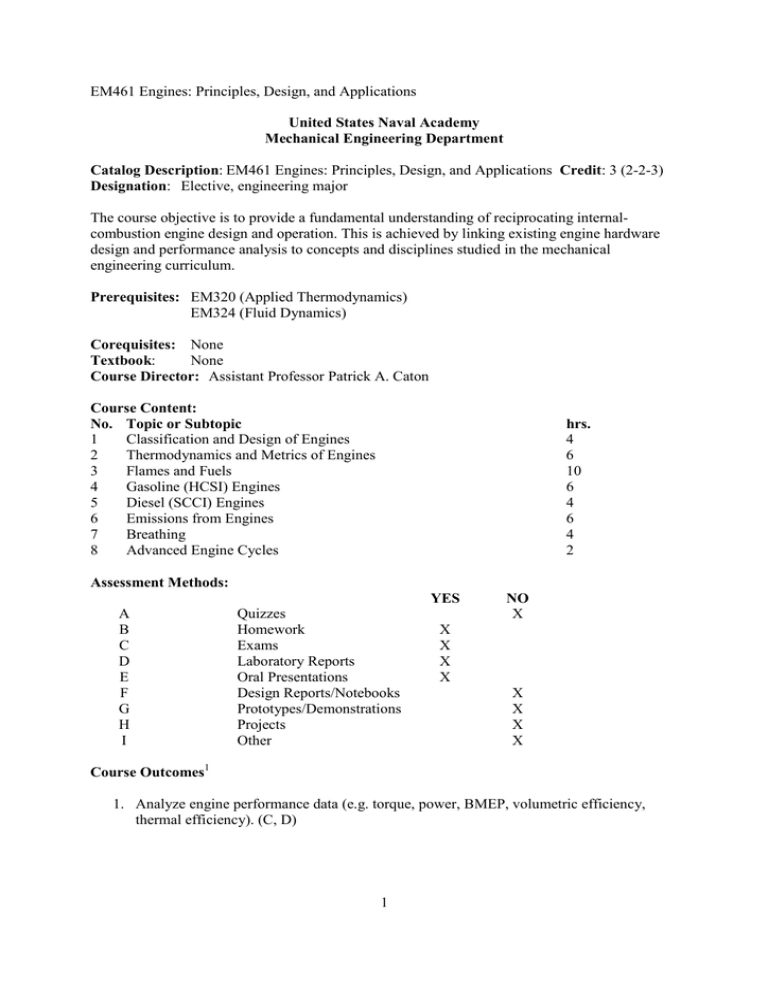
EM461 Engines: Principles, Design, and Applications United States Naval Academy Mechanical Engineering Department Catalog Description: EM461 Engines: Principles, Design, and Applications Credit: 3 (2-2-3) Designation: Elective, engineering major The course objective is to provide a fundamental understanding of reciprocating internalcombustion engine design and operation. This is achieved by linking existing engine hardware design and performance analysis to concepts and disciplines studied in the mechanical engineering curriculum. Prerequisites: EM320 (Applied Thermodynamics) EM324 (Fluid Dynamics) Corequisites: None Textbook: None Course Director: Assistant Professor Patrick A. Caton Course Content: No. Topic or Subtopic 1 Classification and Design of Engines 2 Thermodynamics and Metrics of Engines 3 Flames and Fuels 4 Gasoline (HCSI) Engines 5 Diesel (SCCI) Engines 6 Emissions from Engines 7 Breathing 8 Advanced Engine Cycles hrs. 4 6 10 6 4 6 4 2 Assessment Methods: YES A B C D E F G H I Quizzes Homework Exams Laboratory Reports Oral Presentations Design Reports/Notebooks Prototypes/Demonstrations Projects Other NO X X X X X X X X X Course Outcomes1 1. Analyze engine performance data (e.g. torque, power, BMEP, volumetric efficiency, thermal efficiency). (C, D) 1 EM461 Engines: Principles, Design, and Applications 2. Quantify various design parameters and their effect on engine performance (e.g. compression ratio and air-fuel ratio). (B, C, D, E) 3. Identify optimal engine parameters with respect to efficiency and emissions (e.g. fuel and spark timing effects). (B, C, D, E) 4. Identify engine losses and areas in which engines may be improved (e.g. pumping, thermal, flow, etc.). (B, C, D, E) 5. Quantify various fuel effects on engine performance (e.g. energy density, air-fuel ratio, etc.). (B, C, D, E) 1 Letters in parenthesis refer to the assessment methods listed in the previous section. Program Outcomes (a) (b) (c) (d) (e) (f) (g) (h) (i) (j) (k) Course Outcomes (1) (2) (3) (4) X X X X X X X X (5) X X X X X X X X X X X X Date of Latest Revision: 9 JUNE 2010, Assistant Professor Patrick A. Caton 2





